- Register
- Log in to Tune-In
- Wishlist (0)
-
Shopping cart
(0)
You have no items in your shopping cart.
Beatles News
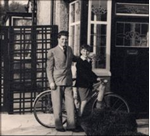
The cousin of John Lennon, who had a close bond with the man considered to be one of the greatest musicians of all time, has died at the age of 82.
Largs has held the surprise connection with The Beatles going back to the early 1990s when Stan Parkes moved to Waterside Street, and gave talks to local groups including the Round Table and Rotary, about his famous cousin.
Stan was also in demand from national media, book authors, and fan groups from around the world, for his insight into the life of one of the greatest musical icons of all time. Stan was with John through the musical revolution of Beatlemania which has had such a lasting impact on popular music culture, and sat in on the recording sessions of the ‘Fab Four’, and his voice can even be heard in the background of some of the famous tracks.
Around 1994, Stan moved to Waterside Street, with his Largs born wife Jan, and stayed there for the rest of his days. John and Stan grew up in Liverpool, the sons of two sisters from a family where the women were very much in charge. Stan, who was seven years older, took young John under his wing, and they would often go out to the park, or the cinema together. As a younger man, Stan was sent to details

Forty-six years after they split, The Beatles are responsible for one in every 100 jobs in their home city of Liverpool. That was one of the standout statistics of the group's financial legacy released in a report this week. BBC News looks at the numbers behind the Fab Four.
Can't buy me love
A Liverpool City Council report found the enduring popularity of John Lennon, Sir Paul McCartney, George Harrison and Ringo Starr still supported some 2,335 jobs in the city.
Latest figures from the council show there are about 230,800 jobs in total in the city. So that means about 1 in every 100 jobs in Liverpool relies in some way on The Beatles. That is not bad for a band that broke up in 1970.
We can work it out
The £82m impact of The Beatles 1 in 100 jobs in Liverpool are connected with interest in The Beatles 2,335 roles sustained by Fab Four 230,800 jobs in total in Liverpool 1m to 2m visitors a year said The Beatles were why they came
This might, however, be an underestimate, according to Professor Richard Evans from Liverpool John Moores University, because the figures do not take into account the marketing value of the brand or the number of people staying at non Beatles-theme details

Did you know the Beatles performed full dress rehearsals when they appeared on The Ed Sullivan Show in February 1964, 52 years ago this month?
Not only did they perform them, but the producers of the show recorded at least one of them.
In the clip below, you can see the Beatles rehearsing for the show at the Deauville Hotel in Miami, Florida, on February 16, 1964. This video was posted on the Facebook account of Masayoshi Tanimoto, who writes, “This rare footage was not broadcast and can’t be seen on any officially released videos.”
This rehearsal was for the group’s second consecutive weekly appearance on the Sullivan show. They had appeared on the program one week earlier, on February 9, making their U.S. debut. That show was presented at the program’s usual location, CBS-TV Studio 50 on Broadway in New York City’s Theater District.
For the group’s second appearance, the show headed south to Miami’s Deauville Hotel. The Beatles arrived on Thursday, February 13, and rehearsals were held over the next two days. This full-dress rehearsal began at 2 p.m. on February 15. The show was presented live on Sunday, the 16th.
By: Christopher Scapelitt details
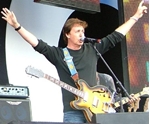
Paul McCartney is widely expected to headline and close the 2016 edition of music festival Pinkpop. Just days later, American rock legend Bruce Springsteen is set to perform in Den Haag.
McCartney is “99 percent certain” to perform at the Limburg event, according to local media outlet 1Limburg. A verbal agreement was reportedly reached between McCartney’s management and Pinkpop director Jan Smeets, the broadcaster reported.
The performance would likely close the three-day event in Landgraaf on June 12, just six days before McCartney’s 74th birthday.
Bruce Springsteen also announced a scheduled tour stop in the Netherlands. He will be joined by his E Street Band at Malieveld on June 14. Limited tickets for the show go on sale on February 12, at nearly 90 euros including service charge.
His last concert in the country, in 2013 at Goffertpark in Nijmegen, won praise from many critics for a heartfelt performance of nearly three and a half hours in length. He played 34 songs as the rain poured down, along with bandmates Steven van Zandt of the Sopranos and Max Weinberg of Late Night with Conan O’Brien.
By: Janene Pieters
Source: NL Times

'Beat Bugs' will feature Eddie Vedder, P!nk, Sia, James Corden and others covering well-known songs by John Lennon and Paul McCartney.
Netflix announced on Wednesday that it will premiere a new animated children's series this summer, featuring superstar covers of some of the most well-known Beatles songs.
Beat Bugs was created by Josh Wakely, who will direct, write and produce the series following a deal with Sony/ATV Music Publishing for worldwide rights to record covers of the John Lennon/Paul McCartney "Northern Songs" catalogue, featuring some of the most well-known Beatles songs.
The series will incorporate songs from the Fab Four to tell uplifting and life-affirming stories. The tracks, woven into the narrative of each episode, will be covered by Sia, Eddie Vedder, P!nk, James Bay, The Shins, Of Monsters and Men, Chris Cornell, Regina Spektor, James Corden and Birdy, with additional artists joining the project set to be announced.
The songs featured include "Help!," "All You Need Is Love," "Come Together," "Penny Lane," "Yellow Submarine," "Lucy In the Sky with Diamonds," "Sgt. Pepper’s Lonely Hearts Club Band" and "Magical Mystery Tour."
By: Hilary Lewis
Source: Holly details

Today, a collaboration has been announced between the world's most celebrated living musician and its foremost video chat and online communication platform: Paul McCartney and Skype have partnered to launch a new range of animated love themed Mojis for Valentine’s Day featuring exclusive new McCartney music coupled with Skype’s animated designs. This new set contains ten specially created Mojis.
Paul McCartney’s career is unparalleled. His music has reached hundreds of millions of people globally, spanning generations. Be it through live performances, composing pop songs, classical works, electronic music, film themes and scores, and most recently composing for the most anticipated video game of the last decade – 'Destiny', Paul has continued to explore new ways to reach people. Paul’s music brings people together and breaks down language and cultural barriers.
Mojis are short animated clips that you can use during Skype chats when words just aren’t enough. These Mojis will be completely unique to hundreds of millions of Skype users and feature sound as well as video, giving the users chat a whole new dimension. This collaboration will allow Skype users to use this medium to c details

Someone's about to go home with a piece of the original mop top.
Thirty-five years after his death, John Lennon is still a hot commodity. Beatles superfans can now bid on a chance to complete their Lennon shrines with a lock of hair from the legendary songwriter’s very own scalp.
The four-inch lock was cut almost 50 years ago on the set of How I Won the War, the only movie Lennon ever appeared in without playing himself. He played Musketeer Gripweed in the darkly comic war film, which came out just after the release of the landmark Beatles album Sgt. Pepper’s Lonely Hearts Club Band in 1967. The movie also marked the first time he sported round glasses, which would go on to become synonymous with his name for the rest of his life.
In order to portray a military man, Lennon had to lose his trademark “mop top” in a dramatic (and now historical) haircut. The movie’s on-set hairdresser Klaus Baruck had a pretty good idea of just how valuable that hair would come to be, and kept a lock from the cut for five decades.
The hair is currently up for grabs to the tune of $12,000 on Heritage Auctions. The lot also includes a newspaper photo of Lennon getting his haircut, another details

Might we interest you in a trip to Liverpool with The Beatles? Trust us when we say we can get you there in an instant.
Travelodge.co.uk unveils its Evolving Cities Liverpool website, which has some nice treasures celebrating the 55th anniversary of the world’s most iconic band playing at the beloved The Cavern Club for the first time.
A lot has changed since that time. Technology has evolved from vinyl to cassette to digital and, for so many audiophiles, it has returned yet again.
However, the digital age means we can all toast a great moment in music’s history by savoring images from the club as Beatles music pours out over the Internet thanks to a Spotify playlist that is cleverly linked to the website.
Now you can virtually tour the club while listening to some of the music that has made the Beatles such a household institution. The Cavern Club is just one notable stop along the way, because a wide swath of Liverpool is represented. The website also boasts some notable features such as the aforementioned Beatles party playlist, a Google Maps integration that lets you tour more than just images of the club’s façade and a treasure trove of factoids and tid bits.
details
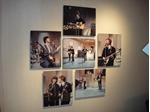
“Ladies and gentlemen, the Beatles!”
With those words, Ed Sullivan introduced America to four lads from Liverpool who would go on to become one the most popular musical acts in history. The date was Feb. 9, 1964, and for the Beatles it was the first of four appearances on the Ed Sullivan Show.
In celebration of that iconic moment, the Robert Kidd Gallery in Birmingham is displaying a rare collection of color photographs taken of the Beatles during their fourth and final appearance on the Ed Sullivan Show.
The six photographs capture the Beatles as they rehearse and perform on the Ed Sullivan Show on Aug. 14, 1965, right before the band played at Shea Stadium to kick off its North American tour.
“The pictures are amazingly clear and crisp,” gallery director Gerard Marti said. “It’s like being there.”
The Beatles appearance happened to coincide with the final black and white episode of the Ed Sullivan Show. At the end of the evening, Sullivan broke the news that his show would begin broadcasting in color the following week.
“This is very first time these photographs are being displayed in this form and medium,” Marti said. &ldquo details
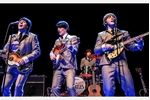
The Bootleg Beatles have been fab for nearly 40 years which is four times as long as the original Fab Four.
The tribute act which was born in 1980 have brought countless pleasure to fans both young and old during the years by giving them as taste of what it must have been like to see The Beatles play live.
It is one of these ticks of time where you get a tribute act which far exceeds the original. Much like Dad's Army went on longer than the Seoncd World War and MASH lasted longer than the Korean War.
For the Bootles Beatles it has been an astonishing ride. One of those enjoying this magical mystery tour is Adam Hastings who plays John Lennon in the show. He said: "I have been in the group for five year and it is fun being a Bootleg Beatle. "I first became aware of The Beatles when I was seven when my dad was teaching my sister how to play bass to A Hard Day's Night.
"I bought my first Beatles LP when I was 13-years-old and got Sgt Pepper from Woolworth's. I always bought an LP in the summer to remind me of my summer holidays. "Since then I have always loved them. "Playing John is an act so when I go home I can and do switch off.
"What I have to do for the show is what how he acted, details

The legacy of The Beatles adds nearly £82m to the Liverpool economy each year, new research has suggested.
The band's impact also supports 2,335 jobs in the city, claims the report commissioned by Liverpool City Council. Professor Simeon Yates, who was lead author, said the city needed to "maintain standards" to boost tourism.
Councillor Richard Kemp, whose ward includes Penny Lane - made famous in a Beatles' song - called for tourism to "percolate" from the city centre.
His ward also includes St Barnabas Church, where the band used to perform, Quarry Bank School - which John Lennon attended - and Dovedale School, also attended by Lennon and his band mate George Harrison.
Spreading tourism would "decrease congestion in town", said Mr Kemp, who added the Allerton Road area - near Penny Lane, where Lennon would meet band mate Paul McCartney to catch the bus to the city centre - could be developed as the "Beatles Homeland Quarter".
The report said the Beatles-related economy was growing by up to 15% a year and that the band's songs were becoming increasingly popular in Brazil and China alongside the more established fan bases in Europe and the US. The research, produced by Liverpool Jo details

"Hey Jude," one of the Beatles' most famous songs, is an uplifting ballad that's inspired the masses for decades. The song, written by Paul McCartney and also credited to John Lennon for some contributions, has been long-used as a generally encouraging message, and it was specifically inspired as an empathetic message to Lennon's son during a tough time for him.
McCartney originally wrote a rough version of the song, called "Hey Jules," to cheer up Lennon's then five-year old son, Julian, during his parents' divorce, and it eventually became "Hey Jude."
"I was going out in my car, just vaguely singing this song," McCartney told Rolling Stone, "and it was like, 'Hey, Jules...' And then I just thought a better name was Jude. A bit more country and western for me." He said the song's intro was "a hopeful message for Julian: 'Come on, man, your parents got divorced. I know you're not happy, but you'll be OK.'"
McCartney wrote "Hey Jude" at a tumultuous time in his own life as well. The song was written while the band was doing studio sessions for the White Album, according to Rolling Stone, when the band members were notoriously feuding. At the same time, he and his then girlfriend, actress Jane Asher, were details
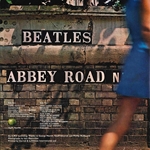
Although Abbey Road was an immediate commercial success and reached number one in the UK and US, it received mixed reviews, with some critics describing its music as inauthentic and bemoaning the production’s artificial effects. Many critics now view the album as the Beatles’ best and rank it as one of the greatest albums of all time.
Front cover
1. The title
The original title for the album “Everest” (after a brand of cigarettes smoked by Geoff Emerick, one of the engineers). The packets had a silhouette of Mount Everest on them and The Beatles liked the imagery. However, the idea was dropped as none of The Beatles wanted to travel to Nepal for a cover shoot.
2. Suggestion for the cover shot
Initially, the band intended to take a private plane over to the foothills of Mount Everest to shoot the cover photograph. But as they became ever more impatient to finish the album, Paul McCartney suggested they just go outside, take the photo there and name the album after the street.
Source: The Vintage News

Former Beatle Sir Paul McCartney has backed the Independent’s Give to GOSH appeal with a heartfelt tribute to the generosity of reader and the great work of the hospital’s staff and volunteers. The endorsement from the former member of the Fab Four comes at the start of the final week of the appeal for Great Ormond Street Hospital (GOSH), which has already smashed all previous records for our seasonal appeal by raising more than £3m.
In a video message he has updated his 1967 hit “When I’m Sixty-Four” in honour of Great Ormond Street Hospital.
He said: “This is Paul McCartney here and this is a message on behalf of the Great Ormond Street Hospital. I want to thank everybody who has donated to their latest campaign and has given money to keep this great hospital and the great work it does going.”
Sir Paul has a long history of supporting GOSH, including a paying surprise visit to the wards, performing karaoke sessions with patients and attending the hospital's annual Christmas party for patients.
GOSH chaplain and Beatles fan Jim Linthicum said: “Sir Paul McCartney is a genius as a musician and I have so much respect for him. He transcends the details
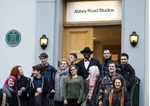
Music students from Weston-super-Mare were given the opportunity to perform at one of the world’s most famous recording studios – London’s Abbey Road.
The students, who all study at Weston College, even got the chance to use the ‘John Lennon microphone’ during the project.
The pupils, who are in the second year of their music degrees at the college, were told to write a composition for brass instruments. It had initially seemed a daunting prospect, as some students had no experience of writing music.
Student Grace Luren at first thought she could not do it. But the project gave the students the opportunity to work alongside National Youth Jazz Orchestra (NYCO). Grace said: “I couldn’t turn down the opportunity to work with musicians of that calibre. “I’m a singer, and cannot read music, so I thought I would embody a brass instrument. “So I sang it all and pretended to be a trumpet.”
With the help of computer programmes, Grace was able to use her voice to compose music the brass players could play to. Paul Raymond, who teaches the course, said: “Grace showed parts of it to the people who would play them, and the first thing th details
